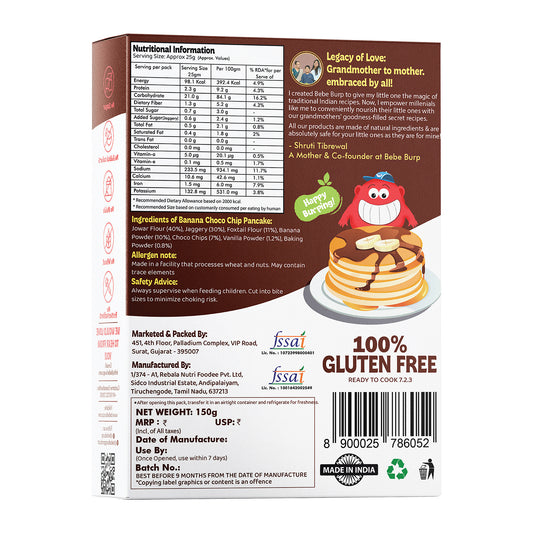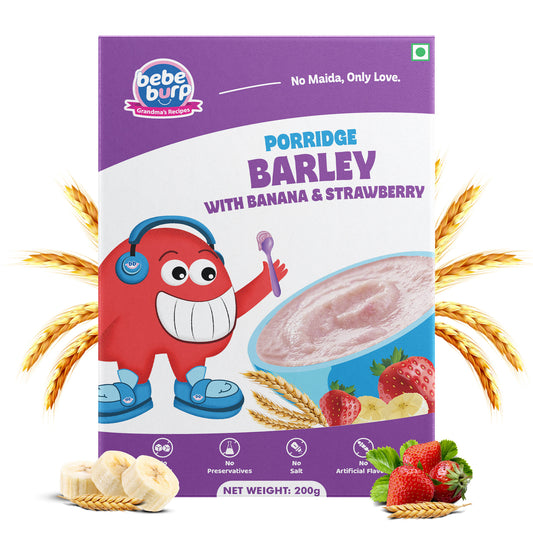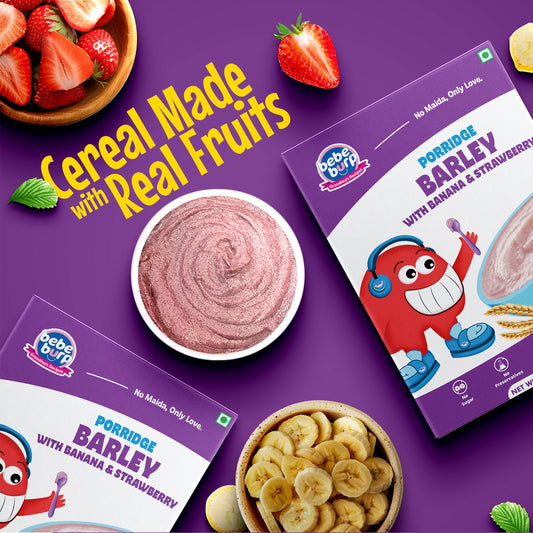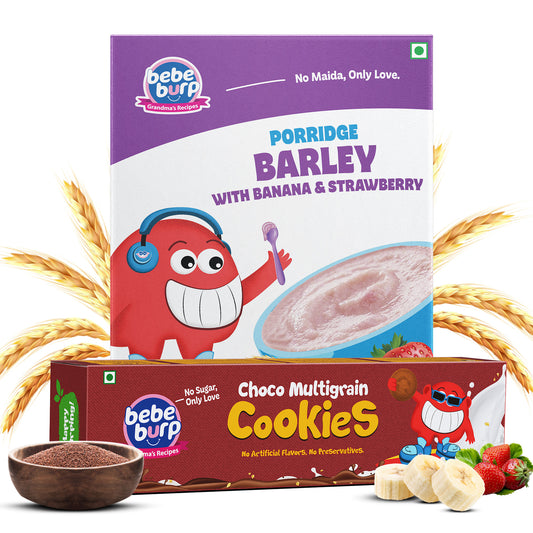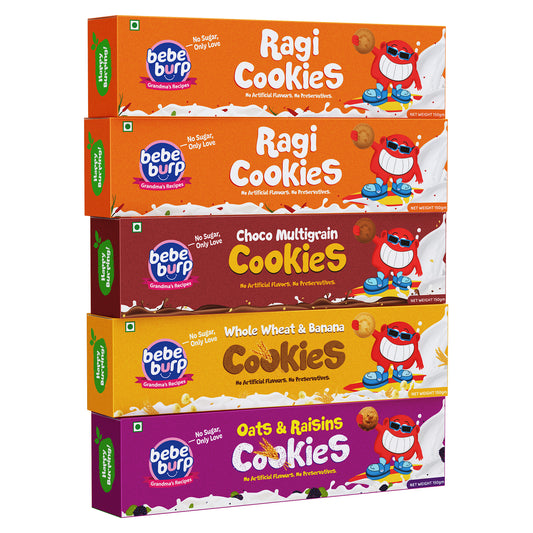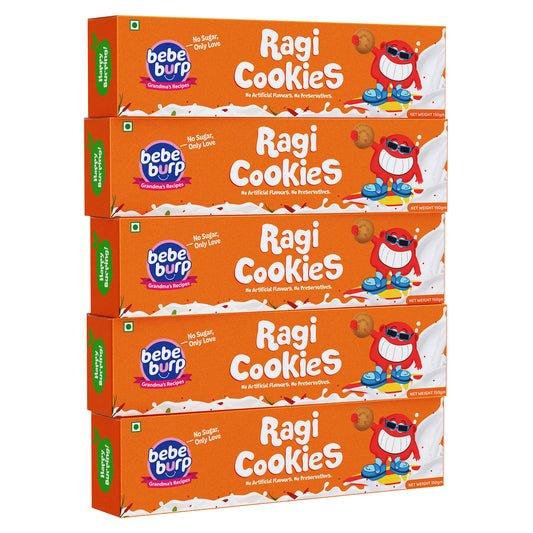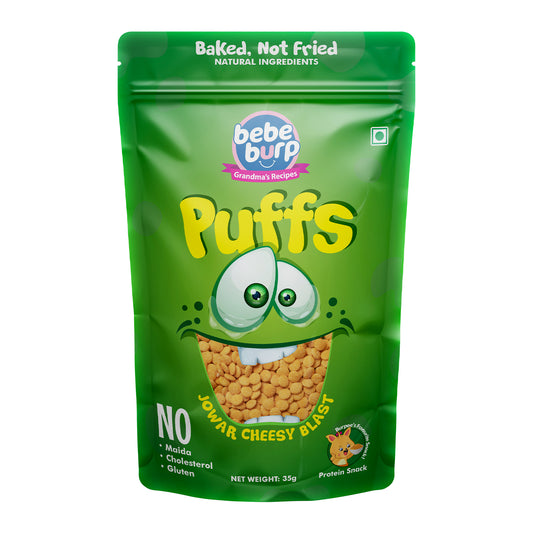Ragi/finger millet is one of those highly nutritive grains that has been a part of varied Indian diets for hundreds of years.
However, as a parent, you may wonder whether babies eat ragi every day.
We will know its benefits, how safe it is, and the easiest ways to add it to your baby's meals.
What is Ragi, and Its Benefits for Babies

Ragi is loaded with vital nutrients that make it a perfect first food for your little ones. Important Benefits are :
Calcium-Rich: Ragi is rich in calcium (necessary for healthy bones & teeth)
Anaemia-Friendly: Boosts hemoglobin levels and prevents anemia.
Helps Digestion: There is a lot of fibre in it that aids your digestion and prevents constipation.
Boosts immunity: Ragi is a rich source of antioxidants and amino acids that promote general stature development and immunity.
Gluten Free: For babies with gluten intolerance or who are allergic to it, it is one of the best options.
When Can Babies Start Eating Ragi?

Ragi can be introduced to a six or so-month-old baby once he starts eating solid foods (chow-ing).
But this has to be done slowly so that the baby gets used to this as a new food, too.
Begin with Ragi Porridge – Combine ragi flour with water or breast milk to make a smooth paste.
Watch for Allergies – Very few babies, but some do have ongoing reactions that manifest as redness or bloating.
Grow in Quantity – Start with just a few spoons and build up as your baby gets used to taking the mouthful.
Is the Daily Consumption of Ragi Safe for Babies?
 Ragi can be fed daily to babies when the mix is balanced in his system with other foods. Some things to think about :
Ragi can be fed daily to babies when the mix is balanced in his system with other foods. Some things to think about :
Variety is Key – Yes, ragi is a super grain, but eating it as your only staple will leave some nutritive holes if rotated with other grains like rice, oats and wheat.
Remember the Hydration – Because ragi is high in fibre, adequate fluid intake is necessary to prevent constipation.
Look Out for Digestive Issues - Some babies may get a little bloated (as in me) if you give them too much ragi first.
How to Introduce Ragi in Your Baby's Diet

A Unique and Healthy Way of introducing Ragi to your baby will be:
- Ragi porridge is a simple, gentle food for infants.
- Ragi Idli or Dosa Recipes are tender and easy to chew if your little one is just beginning to eat solid foods.
- Ragi Laddoo is a perfect finger food for kids.
- Ragi Pancake is one of the nutritious options to start your delicious.
Healthy Ragi Recipes for Babies
1. Ragi Banana Porridge
Ingredients: 2 tbsp ragi flour, one mashed banana, 1 cup water/milk
Method: Boil the water/milk till smooth with the ragi flour while stirring consistently. Mash the bananas together and serve warm.
2. Ragi Apple Pudding
Ingredients: 2 tbsp ragi flour 1/2 apple (grated)– 1 cup milk/ warm water
Method: Do as you do for ragi flour; cook it with milk or water and add grated apple at the end (stir once thickened)
3. Ragi and Vegetable Khichdi
Ingredients: 2 tbsp ragi flour, mashed vegetables (carrot, peas), 1 cup water
Method: Cook mashed vegetables with ragi flour so that it becomes smooth and consistent.
Potential Side Effects of Excessive Ragi

Ragi is okay to eat but consumed in limited quantities,
Constipation or Bloating – Rich in fiber, it causes constipation/bloating.
Some babies are gassy, and some eat more quickly, which can lead to mild digestive discomfort.
Calcium Overload- Though this is not likely to happen in daily living, such a considerable deficiency, particularly of calcium, would disrupt iron absorption
Balance the ragi with fruits, vegetables, and other whole grains to avoid those problems.
Conclusion
Ragi is a super food for babies. Everyone must try it in the right way for the health benefits of the child.
Unless included as part of a varied diet and balanced meals, daily consumption is safe.
Begin with simple ragi foods and see how your baby tolerates them before including them daily. Happy feeding!



